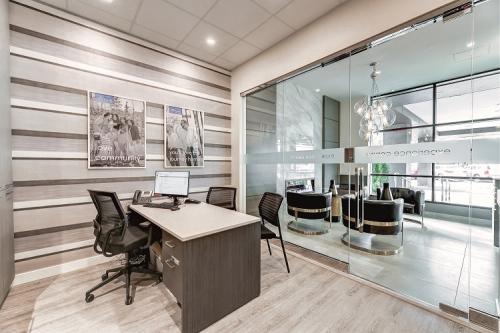Tenant Improvement vs. Turnkey Construction: A Brief Guide

Picture this: a landlord and a tenant have come to an agreement that the space meets the tenant's needs perfectly, and the tenant has just signed the lease. After they sign the lease, both landlord and tenant realize each thought the other would be in charge of the renovation.
You certainly don't want to end up in this situation. Whether you're a landlord or a tenant in commercial real estate, you should know the differences between turnkey construction and tenant improvement.
Keep reading to learn about the advantages and disadvantages of each of these arrangements.
What is Turnkey Construction?
Landlord turnkey construction, sometimes called landlord improvements, is when the landlord pays for and manages all of the construction work on a space. As the name implies, all a tenant has to do to move in and open their business is "turn the key."
There is generally a formal agreement established between landlord and tenant about which precise improvements need to be made. The tenant may provide plans and cost estimates.
The primary benefit of this arrangement as a landlord is that you know exactly what is being done to the space. You can be sure the tenant is not making any changes you don't want, and you know the improvements are up to your quality standards.
As a tenant, the main advantage of turnkey build-outs is not having to deal with the extra work of hiring contractors. You can also be sure that you will not be paying out of pocket for any renovations that cost more than estimated.
Experienced landlords often have a team or set of contractors they work with, so this process may be faster than tenant improvements as well.
What is Tenant Improvement?
Tenant improvement, or T.I. construction, is when the tenant is in charge of handling all desired renovations to the space that is being rented. The tenant is in charge of hiring and paying all contractors.
The landlord will often provide a T.I. allowance that the tenant can use to pay for these renovations. If costs are higher than estimated, the tenant will typically have to pay out of pocket.
There are two main benefits of T.I. over turnkey for the landlord: not working with any contractors, and not having to cover any expenses that go over the estimated cost.
The main benefit for tenants is knowing that the changes being made to the space are the exact changes that they want. Tenants may not have experience with commercial real estate construction. They should familiarize themselves with the basics and work with an experienced project manager.
Next Steps
Now you know the difference between turnkey construction and tenant improvement. You can make an informed decision about how you would like to handle your commercial renovations in Edmonton.
It doesn't matter if you're a landlord or a tenant. If you'd like to work with an experienced team with a proven track record and project management skills, contact us today for a free quote.
Post Your Ad Here
Comments